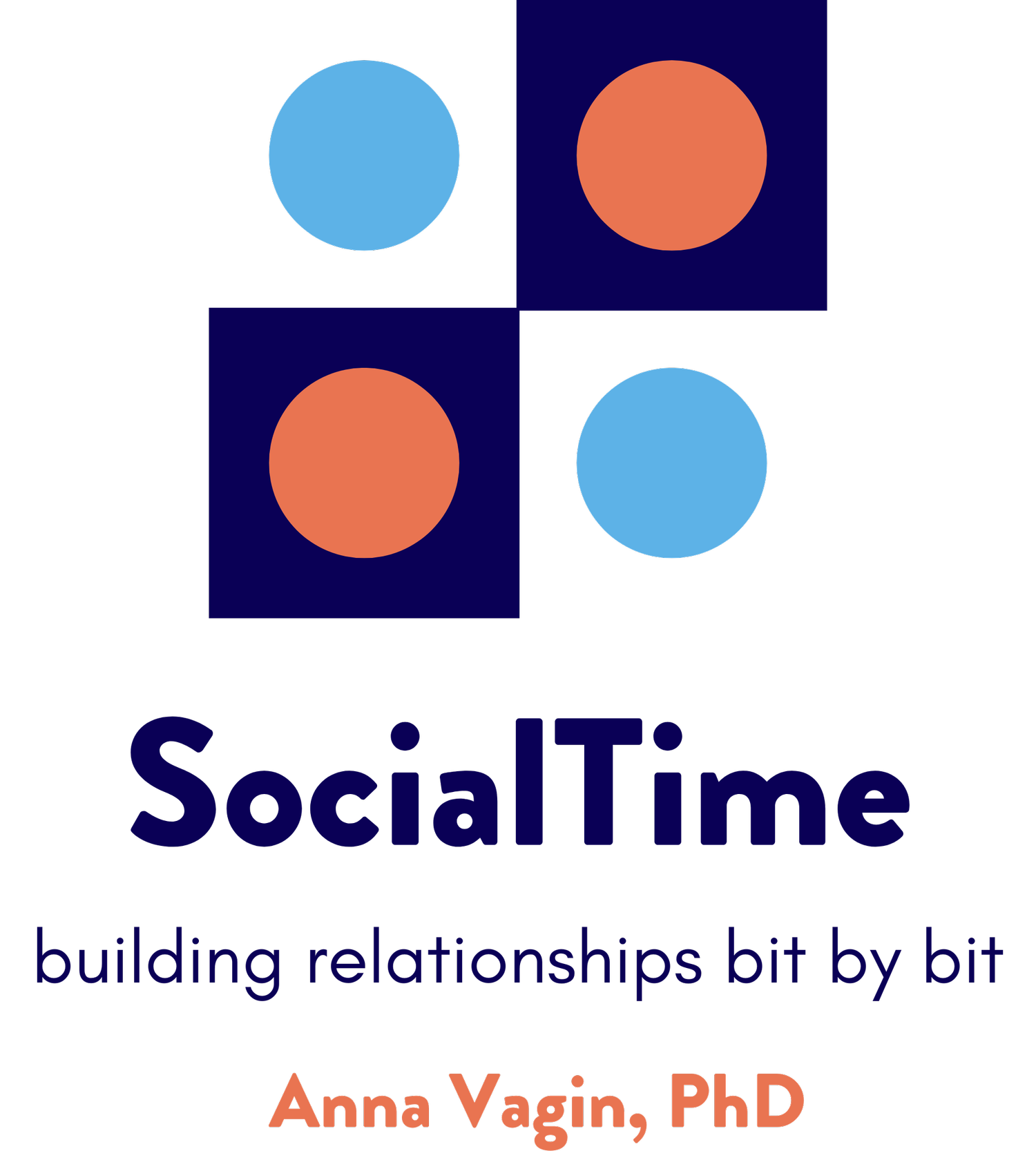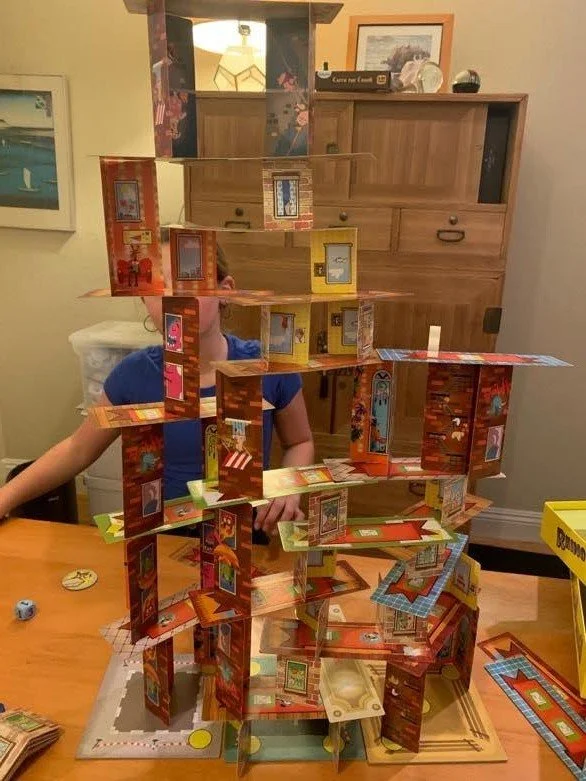Looking for a Fun and Engaging Language Workout? Games Deliver!
A lot of language goes into building a house of cards! Rhino Hero by Haba
When I was in grad school many decades ago, games were seen as a break from work. Now, games so often ARE the work, allowing up to work on a broad range of skills.
You saw this visual a while back, but here it is as a reminder of all that we can work on while playing a game: 🧩
Building skills through game-play
When I work with games (and there are so many great ones in the market these days), I want to challenge a student to move beyond the games they are familiar with. Ones that, whether cooperative or competitive, will stretch their cognition, executive function, social engagement, and LANGUAGE. 💬
That’s our focus today – helping our students build game-playing and language skills concurrently. It’s a two-fer!!
I use engaging games that students want to learn, so they are motivated to persevere (wow – working on that too!) 💪🏼 They will work super hard to put new and complicated language constructions together because they are enjoying the activity.
I have a new student in my practice. Her learning differences, ASD, and social anxiety make it hard for her to use the language she has. At school, many peers have taken on the responsibility of talking for her, but now she is frustrated and wants to speak her mind more. We are working on building confidence and language. 🗣️💯
Let’s take a closer look at how I used Cauldron Quest as a jumping-off point…
I use lots of visual supports and break down new games to learnable chunks. While we might not get to the WHOLE game, we go bit by bit to make sure the student is successful every step along the way. Remember – you don’t have to play the game the way the instructions tell you to!
Since our focus today is on complex language, let’s take a look at one step of the game – rolling the Magic Dice to score a Reveal Charm. 🎲✨ You have 3 dice, and have 3 tries to roll all even numbers. While that sounds simple, actually, the language isn’t all that easy:
As soon as you start considering what getting the Reveal Charm means, and what happens next, we’ve got to bring in that complex language. Writing it out is an important step, so students can process and keep the info in working memory as they play! 🧠✨
Modifying games to meet your students where they are
So often, all my students need are modifications of the game. With Cauldron Quest, I have a cheat sheet of all the different rolls and actions. All it took was a bit of cut-and-paste. Easy peasy, and WOW, a game changer! 💥
We don’t want to be in charge of the game, constantly telling the students what the dice mean. A visual support lets them find the info for themselves, building self-reliance.
💡 Want even more ideas for using games to build language and social learning skills? I’ve got a coaching session that dives deeper — full of strategies you can start using right away.
We moved on to the gist of the game – finding the ingredients we needed and moving those potion bottles into the cauldron to win the game. Again, it got complicated really fast, incorporating not just complex language, but those mental state verbs (MSV) I love so much! 😍
When you turn a potion bottle over, you are guessing and hoping that it will reveal an ingredient you need. I supported my student in making a guess. That was already a bit challenging, because she was anxious about being wrong. But her curiosity and enjoyment of the game carried her through:
Cauldron Quest by Peaceable Kingdom
Remember, visual supports don’t need to be neat or fancy. They just need to get the info across. 📰
By the end of our session, the student felt that she had played the game and succeeded at something new. We will play several more times, making sure that, when she joins a group in the future, she will be ready to join in the play. 🪄🎲
Happy playing!







